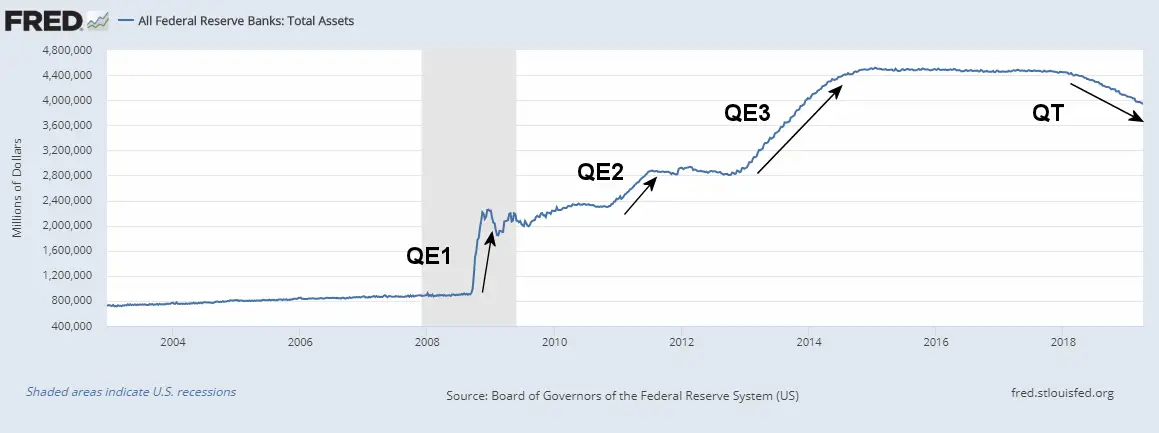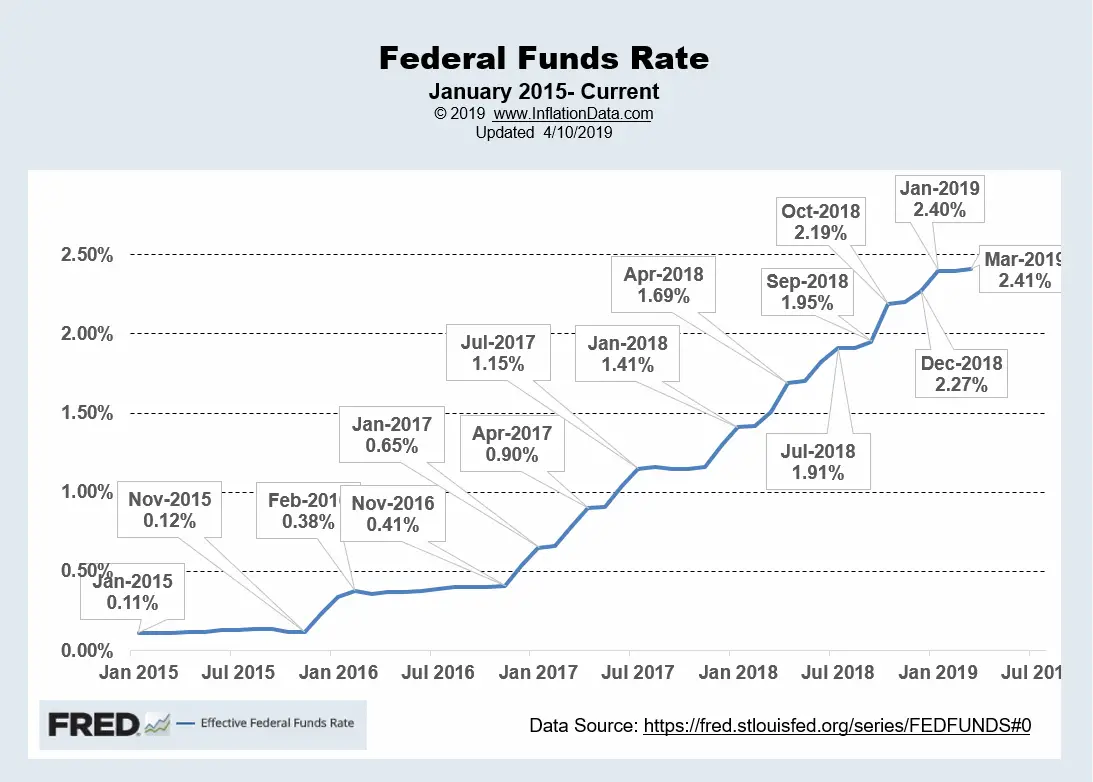Quantitative Tightening (QT) is a contractionary monetary policy i.e. the opposite of Quantitative Easing (QE). From 2009 through 2014 the Federal Reserve (FED) engaged in three separate rounds of Quantitative Easing where the FED acquired various forms of Government and even private debt and added it to its books as “assets”. This massive Quantitative Easing led the FED to increase its balance sheet from $869 Billion to nearly $4.5 Trillion dollars predominately made up of U.S. Treasuries and Mortgage Backed Securities. The FED maintained this level of holdings by “rolling over” its investments. That is when the assets matured they reissued new ones of the same value.
Quantitative Easing is considered a new “tool” in the belt of the FED and was a last ditch effort to stem the tide in the massive contraction of the money supply in 2008-2009. It was necessary due to the massive contraction in the stock market which reduced asset values by Trillions of dollars virtually overnight thus reducing individuals and corporations “perceived wealth”. Although the stock market isn’t considered part of the money supply, individuals and corporations consider it part of their wealth and so if they see it contracting they become less likely to spend other assets.
Beginning in 2018 the FED decided that the economy was healthy enough that they could begin retiring some of that debt. Rather than selling their debt on the open market the FED decided to simply let the Government Debt it held expire and not issue new debt to replace it. This creates downward pressure on the money supply. The best way to understand both Quantitative Easing and Quantitative Tightening is to look at the Total Assets held by the FED. In the following chart we’ve added labels to the chart available from FRED to show when QE and QT occurred.
At the same time the FED also began raising interest rates. This creates similar forces to decreasing the money supply in that higher interest rates tends to cause people (and businesses) to be more reluctant to use debt to expand purchases thus reducing overall demand. In this particular instance it appears that the FED has been more aggressive in raising rates than in lowering holdings. As we can see from the above chart QT has been much more gradual (as promised by the FED) than QE was. But if we look at the chat below we see that interest rates were being raised rather aggressively in 2018 which caused the stock market to stumble in late 2018 at which point the FED stopped raising interest rates but continued with Quantitative Tightening.
You might also like:
- How Does Inflation Affect Foreign Exchange Rates
- M1 Money Supply and Inflation
- What is Velocity of Money?
- What is Quantitative Easing?
- What is Inflation?
- More Definitions



